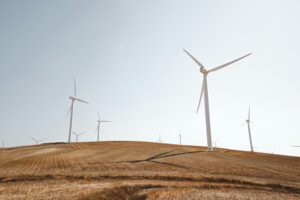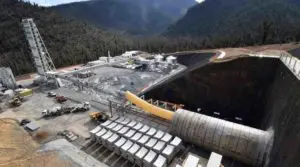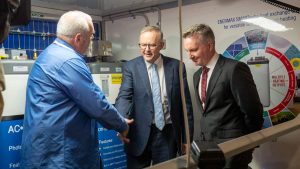Barwon Water, Victoria’s largest regional urban water corporation serving residents in and around Geelong and Colac, announced on Tuesday that it has completed the switch to 100 per cent renewables.
Serving more than 320,000 permanent residents – and up to 545,000 people during peak holiday periods – Barwon Water’s service area includes the City of Greater Geelong, Borough of Queenscliffe, Surf Coast Shire, Colac-Otway Shire, and part of the Golden Plains Shire.
This encompasses the Bellarine Peninsula, north to Ballan and west to Colac, Lorne, and Apollo Bay.
Energy usage across all of Barwon Water’s various water and sewerage facilities adds up to more than 30GWh of electricity each year – equivalent to the electricity usage of 6,000 households.
Since adopting its own 100 per cent renewables target in 2016 – and as part of the Victorian water sector’s aim to source all electricity from renewable sources by 2025 – Barwon Water has built up a diverse portfolio of renewable energy projects across the region.
It says it is now generating around 65GWh of electricity each year from approximately 25MW of renewable energy capacity.
Key projects include the 3MW Black Rock solar farm, the first megawatt-scale solar installation in the Australian water industry.
Smaller projects include the 300kW Wurdee Boluc solar and battery array which supplies around 40 per cent of the water treatment plant’s annual electricity needs; the 240kW Torquay solar array located next to the Torquay water storage facility; and the 80kW Kadak depot solar array in Breakwater.
Another key project is the Colac Renewable Organics Network (RON) which converts organic waste from the Australian Lamb Company and Bulla Dairy Foods into renewable electricity and heat. The Colac RON ensures that the local water reclamation plant runs on 100 per cent renewable energy.
Barwon Water has also invested in strategic partnerships with local organisations and other water organisations to purchase additional renewable electricity, including energy 17MW from the Mt Gellibrand Wind Farm through the Barwon Renewable Energy Partnership and electricity from the Kiamal Solar Farm.
And, with Barwon Water now generating more electricity than is currently needed to run its facilities, it is able to export excess electricity back to the grid, generating an additional source of revenue.
“We’re proud to achieve 100 per cent renewable electricity,” said Shaun Cumming, managing director of Barwon Water.
“It has been made possible through collaboration with our regional stakeholders and water sector peers, and the support of our customers.
“This milestone reflects our commitment to a healthier environment and providing essential water and wastewater services in the most sustainable way possible.
“In addition to reducing carbon emissions, these investments are also reducing energy costs, putting downward pressure on customer bills and generating revenue from surplus electricity.”
Barwon Water will now turn its attention to achieving its goal of net-zero emissions across its operations by 2030.
“We are strongly focused on our 2030 target of achieving net-zero emissions across our operations and doing it in a way that reduces energy costs,” said Cumming.
“This includes tackling direct emissions from wastewater treatment processes and transitioning to a zero-emissions vehicle fleet.”










